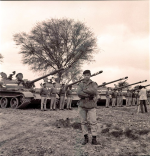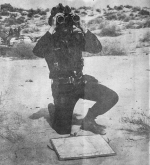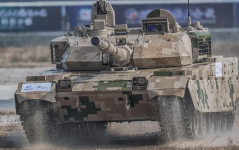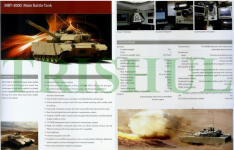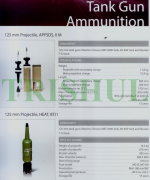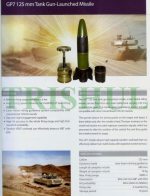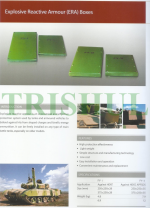- Jan 25, 2024
- 111,083
- 353
Armour Corps
After taking over some share of stores, equipment and funds, assets were moved to Pakistan and Nowshera was selected for the Armoured Corps Centre and School. The advance party arrived at Nowshera in November 1947 and the main body followed a month later. The Sikh Regimental Training Centre and British Military Hospital lines were taken over. Considerable difficulties were experienced both in India and on arrival here, but due to the sheer hard work, initiative and dedication displayed by the officers, junior commissioned officers and other ranks, all difficulties were overcome and the Armoured Corps Centre and School was established at Nowshera Cantonment.The journey from Ahmednagar to Nowshera commenced with the announcement of independence of Pakistan as made by Quaid-i-Azam Mohammad Ali Jinnah. On the same day, the Pakistan Armoured Corps was born. At that time, there was no Armoured Corps training institution in any area which later on became part of Pakistan. All such training institutions were located at four different places in India. These are:-
- Armoured Corps Officers Training School at Ahmednagar.
- Armoured Corps Training Centre No.1 at Lucknow.
- Armoured Corps Training Centre No.2 at Ferozepur.
- Armoured Corps Training Centre No.3 at Babina.
Under the Independence Act, it was decided that the Indian Army, including the Armoured Corps, will be divided at the ratio of 2:1 between India and Pakistan. The Armoured Corps School at Ahmednagar had to stay with India, and the Muslim instructors were allowed to opt for the newly born state of Pakistan. In addition, the training equipment at the School was also to be distributed as per the decided ratio. To carry out this colossal task of distribution, a board composed of British, Muslim, Sikh and Hindu officers was constituted under the chairmanship of Brigadier Gimson, who was the Commandant of the Armour School at that time. On similar lines, other boards were constituted, for all other training Centres.
After the arrival of Mountbatten, as Viceroy of India, the partition date was announced. Time was precariously short. The C-in-C, Field Marshall Sir Claude Auchinleck and his staff produced the plan for the division of the Army. The division of the Indian Armoured Corps was based upon the principle that regiments with ethnic majorities would be allotted to their respective ethnicities. Pakistan's share was 6 regiments, (5 H, 6 L, 11 C, 13 L, 19 Land Scinde Horse). Since Guides had one Dogra and one Sikh squadron, it was allotted to India. Scinde Horse with one KK (Khaim Khani) and one Pathan squadron was earmarked for Pakistan. Because of the Guide's association of over 90 years with Mardan, the CO requested for it to be allocated to Pakistan. The C- in- C refused, however, a miraculous freak changed our fate. The KK squadron of Scinde Horse decided to remain in India as their homes in Rajputana were now part of India. This happy decision of the KK squadron brought the Guides to Pakistan. It received the Pathan squadron from Scinde Horse and the PM squadron from Hodson's Horse, giving its Sikh squadron to Hodson's Horse and its Dogra squadron to Scinde Horse.
"On Partition, the Indian Army retained what was the Centre and School of the Indian Armoured Corps along with a majority of the officer cadre, most of whom were non-Muslims, in accordance with the British policy. Consequently, with very few officers in Armoured Corps, all below the rank of lieutenant colonel, and with the GHQ placing emphasis mostly on the Corps of Infantry, the organization of the Armoured Corps was adversely affected in the initial period preceding Partition. The overall situation was so pathetic that there was no existence of even a Directorate for the Armoured Corps, which is so vital for regulating the affairs and solving the evolutionary problems of the Corps, there being just a Grade-2 staff officer who was a British officer named Major Ritter.
The Armoured Corps Directorate was established at a much later stage when Brigadier Idrees, Commander 3rd Armoured Brigade was appointed Director Armoured Corps and was later replaced with the rank of a Major General. The Armourtd Corps Centre and School were established at Nowshera. Matters at these institutions progressed slowly till Colonel Ihsanullah Babar took over as Commandant, after which things began to improve considerably at a quicker pace as procedures, drills and training policies were streamlined.
The Muslim element of the Indian Armoured Corps Centres at LUCKNOW, BABINA and AHMED NAGAR formed the nucleus of the Pakistan Armoured Corps Training Regiment. After collecting a token share of stores, equipment and funds they moved to Nowshera - Pakistan. The advance parties arrived in August 1947 while the main parties followed a month later. The Sikh Regimental Training Centre and British Military Hospital Lines were occupied. Needless to say that considerable difficulties were experienced both in India and on arrival in Pakistan, but due to remarkable patience and energy displayed by all ranks, the obstacles were sur-mounted with the untiring efforts and hard work of those few who laid the foundations of this elite corps.
In April 1948, Quaid-e-Azam Mohammad Ali Jinnah visited this establishment and addressed a Durbar which is an honor for the Armoured Corps. The first attestation parade was held for the first batch of recruits to pass out and since then a steady flow has been maintained. On 13th April 1948, the founder of Pakistan, Quaid-e-Azam Muhammad Ali Jinnah visited the AC Centre and addressed a durbar which is a unique honour and cannot be claimed by many in Pakistan. Quaid-e-Azam spoke about cavalry said: "Cavalry has always been the spearhead of the army. This is no less true in these days of mechanization that it was in the days of horses. To carry out their role cavalry must have the very best in officers and men. Whether they do in fact attain this level depends very largely on you. You produce the recruit and turn him out as trained soldier. Upon this training and teaching depends the efficiency of the Armoured Corps as a whole"
The proof of combat efficiency of the corps was the action taken in 1948 during Kashmir War. Later the major operational participation by Armoured Corps was during Indo-Pak War of September 1965. It stood the test in a most splendid and praiseworthy manner. The men fought with valour and determination unparalleled in recent history. Many laid down their lives for the country. A total of 53 gallantry awards were bestowed upon Officers, Junior Commissioned Officers and Soldiers of the Corps in recognition of their deeds in the battle field including the most coveted gallantry award of Nishan-e-Haider. Over sixty Imtiazi Sands were also awarded to the personnel of the Corps. After the Indo-Pak War 1965, a few more regiments were raised / re-organised.
During the War of 1971 individual regiments took part in Chammb and Sind. Again the regiments came upto the expectations and proved once again that Pakistan Armoured Corps is a force to reckon with.
The equipment has now changed much, to include some of the latest of the family of tanks. What's more, a high standard of training has been achieved at all levels. The Armoured Corps Stands today as most hard-hitting, mobile force ready to perform its role for the defence of Pakistan both in peace and War.
The Corps has since grown in size to the extent that it would barely be recongisable to the founding fathers of 1947. This besides other factors has only been possible due to vigorous efforts of the Armoured Corps Centre in maintaining a steady flow of manpower to be absorbed in different Armour Regiments.


